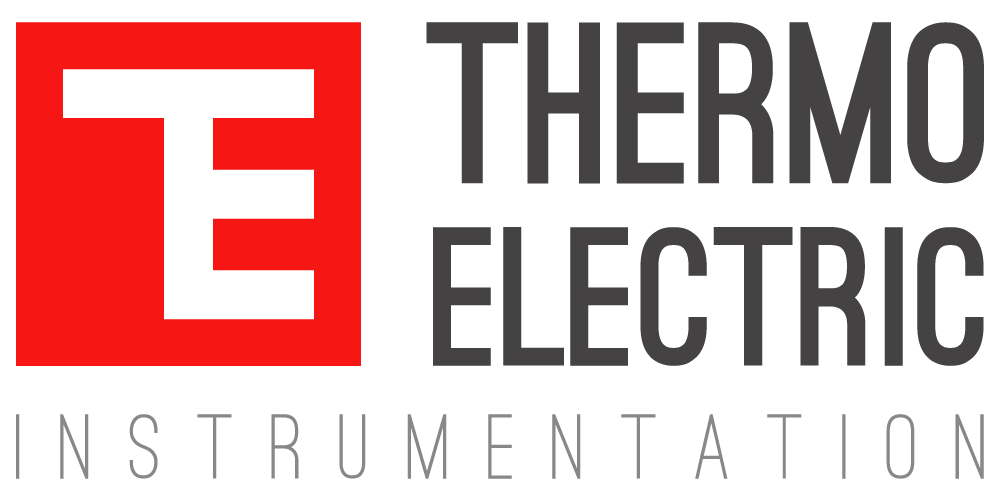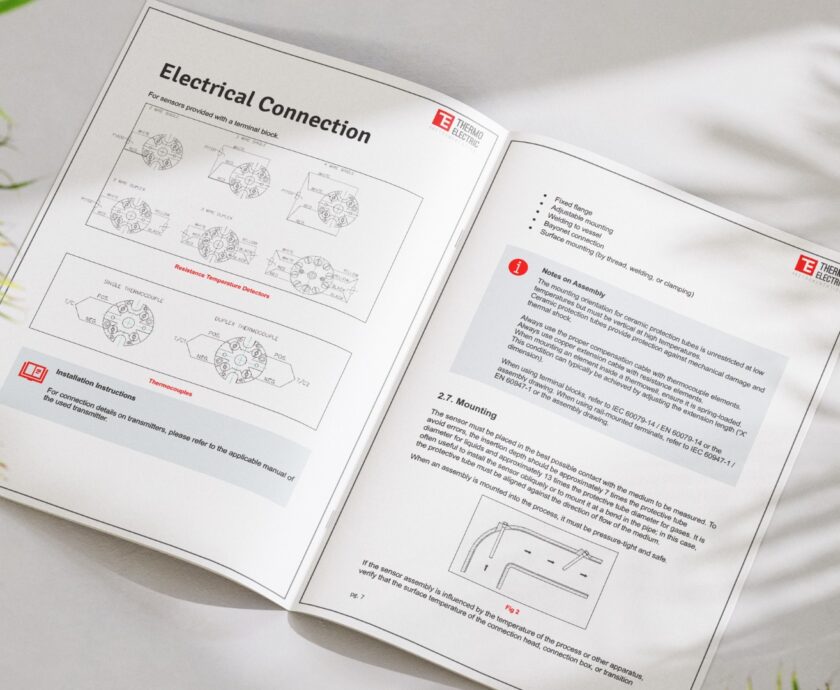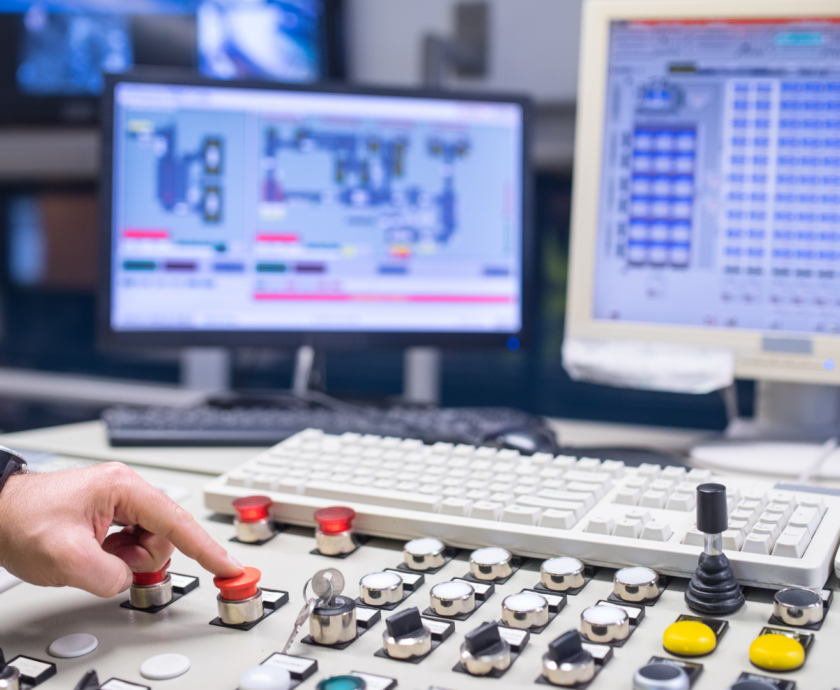Accurate temperature measurement is critical across a wide range of industries, from manufacturing and energy production to semiconductor wafer furnaces. However, the performance of a temperature reading is directly tied to its accuracy. Understanding the standards that govern thermocouple accuracy is not only beneficial but also essential for ensuring process control, safety, and data integrity.
The Importance of Thermocouple Accuracy
When two dissimilar electrical conductors are joined at one end (the measuring junction or “hot” end) and this junction is exposed to a temperature different from the other ends (the reference junction or “cold” end), a voltage (electromotive force or EMF) is generated. The magnitude of this voltage is proportional to the temperature difference between the two junctions. By measuring this voltage and knowing the temperature of the reference junction, the temperature at the measuring junction can be determined.
Given this fundamental principle, it becomes clear why the accuracy of the relationship between temperature difference and generated EMF is critical. Inaccurate temperature readings can lead to inefficient processes, compromised product quality, safety hazards, and flawed experimental results. To ensure comparability and reliability in temperature measurement across different applications and manufacturers, international and national standards have been developed to define the acceptable limits of error for thermocouples. This article will delve into two of the most prominent standards: IEC 60584-1 and ASTM E230 / ANSI MC96.1.
Delving into IEC 60584-1 Accuracy
The IEC standard IEC 60584-1 is a widely recognized global standard that specifies the EMF versus temperature characteristics for various types of thermocouples. This standard provides the reference tables that define the expected voltage output of each thermocouple type over a range of temperatures.
Let’s look at the voltage-temperature relationships and implied accuracy limits for some commonly used base metal and noble metal thermocouple types according to IEC 60584-1:
| Thermocouple Type | Class | Tolerance | Applicable Range | Basic Range |
|---|---|---|---|---|
| Type J (Iron-Constantan) | Class 1 | ±1.5°C or ±0.004 |t| | -40°C to 750°C | ±1.5°C (-200°C to +40°C) |
| Class 2 | ±2.5°C or ±0.0075 |t| | -40°C to 750°C | ±2.5°C (-200°C to +40°C) | |
| Class 3 | ±5.0°C or ±0.015 |t| | -200°C to 40°C | N/A | |
| Type K (Chromel-Alumel) | Class 1 | ±1.5°C or ±0.004 |t| | -40°C to 1000°C | ±1.5°C (-200°C to +40°C) |
| Class 2 | ±2.5°C or ±0.0075 |t| | -40°C to 1200°C | ±2.5°C (-200°C to +40°C) | |
| Class 3 | ±5.0°C or ±0.015 |t| | -200°C to 40°C | N/A | |
| Type N (Nicrosil-Nisil) | Class 1 | ±1.5°C or ±0.004 |t| | -40°C to 1000°C | ±1.5°C (-200°C to +40°C) |
| Class 2 | ±2.5°C or ±0.0075 |t| | -40°C to 1300°C | ±2.5°C (-200°C to +40°C) | |
| Type E (Chromel-Constantan) | Class 1 | ±1.0°C or ±0.004 |t| | -40°C to 800°C | ±1.0°C (-200°C to +40°C) |
| Class 2 | ±1.7°C or ±0.0075 |t| | -40°C to 900°C | ±1.7°C (-200°C to +40°C) | |
| Type T (Copper-Constantan) | Class 1 | ±0.5°C or ±0.004 |t| | -40°C to 350°C | ±0.5°C (-200°C to +40°C) |
| Class 2 | ±1.0°C or ±0.0075 |t| | -40°C to 350°C | ±1.0°C (-200°C to +40°C) | |
| Type R (Platinum 13%Rh–Platinum) | Class 1 | ±1.0°C or ±0.001 |t| | 0°C to 1600°C | — |
| Class 2 | ±1.5°C or ±0.0025 |t| | 0°C to 1600°C | — | |
| Type S (Platinum 10%Rh–Platinum) | Class 1 | ±1.0°C or ±0.001 |t| | 0°C to 1600°C | — |
| Class 2 | ±1.5°C or ±0.0025 |t| | 0°C to 1600°C | — | |
| Type B (Platinum 6%Rh–Platinum 30%Rh) | Class 1 | ±0.005 |t| | 600°C to 1700°C | — |
| Class 2 | ±0.0025 |t| | 600°C to 1700°C | Note: IEC 60584-1:2013 removed fixed error term |
Note: Class 3 is primarily intended for cryogenic applications, from approximately -200 °C to +40 °C. However, it is difficult to manufacture thermocouples that meet Class 3 tolerances, especially below -40 °C. As such, Class 3 is rarely used and often requires special material selection. For Type T thermocouples in particular, it is unlikely that a single batch will meet both Class 2 and Class 3 tolerances over the entire temperature range. A reduction in range is often necessary.
Exploring ASTM E230 / ANSI MC96.1 Accuracy
In North America, the ASTM E230 standard (often referenced alongside ANSI MC96.1) is another key standard for specifying the temperature-EMF relationships and tolerances for thermocouples. Similar to the IEC standard, ASTM E230 defines standard EMF-temperature tables for various thermocouple types and includes tolerance grades to categorize expected accuracy.
The most common tolerance grades in ASTM E230 are Standard and Special. The Special tolerance grade represents tighter limits (higher accuracy) compared to the Standard tolerance grade. The tolerance is expressed as either a fixed temperature deviation or a percentage of the measured temperature, whichever is greater.
Let’s look at the accuracy limits for some common thermocouple types according to ASTM E230:
| Thermocouple Type | Grade | Tolerance | Applicable Range | Extended Range (Below 0°C) |
|---|---|---|---|---|
| Type J (Iron-Constantan) | Standard | ±2.2°C or ±0.75% of t | 0°C to 760°C | ±1.1°C or ±0.4% of |t| (-210°C to 0°C) |
| Special | ±1.1°C or ±0.4% of t | 0°C to 760°C | ||
| Type K (Chromel-Alumel) | Standard | ±2.2°C or ±0.75% of t | 0°C to 1260°C | ±2.2°C or ±0.75% of |t| ±1.1°C or ±0.4% of |t| (-200°C to 0°C) |
| Special | ±1.1°C or ±0.4% of t | 0°C to 1260°C | ||
| Type N (Nicrosil-Nisil) | Standard | ±2.2°C or ±0.75% of t | 0°C to 1260°C | ±2.2°C or ±0.75% of |t| ±1.1°C or ±0.4% of |t| (-200°C to 0°C) |
| Special | ±1.1°C or ±0.4% of t | 0°C to 1260°C | ||
| Type E (Chromel-Constantan) | Standard | ±1.7°C or ±0.5% of t | 0°C to 870°C | Standard: ±1.7°C or ±1.0% of |t| Special: ±1.0°C or ±0.4% of |t| (-200°C to 0°C) |
| Special | ±1.0°C or ±0.4% of t | 0°C to 870°C | ||
| Type T (Copper-Constantan) | Standard | ±1.0°C or ±0.75% of t | 0°C to 400°C | Standard: ±1.0°C or ±1.5% of |t| Special: ±0.5°C or ±0.8% of |t| (-200°C to 0°C) |
| Special | ±0.5°C or ±0.4% of t | 0°C to 400°C | ||
| Type R (Platinum 13%Rh–Platinum) | Standard | ±1.5°C or ±0.25% of t | 0°C to 1480°C | — |
| Special | ±0.6°C or ±0.1% of t | 0°C to 1480°C | — | |
| Type S (Platinum 10%Rh–Platinum) | Standard | ±1.5°C or ±0.25% of t | 0°C to 1480°C | — |
| Special | ±0.6°C or ±0.1% of t | 0°C to 1480°C | — | |
| Type B (Platinum 6%Rh–Platinum 30%Rh) | Standard | ±0.5% of t | 800°C to 1700°C | — |
| Special | ±0.25% of t | 600°C to 1700°C | Note: Special grade starts at 600°C |
These ASTM specifications provide another framework for defining and understanding thermocouple EMF characteristics and accuracy, which is widely used, particularly in North America.
Comparing and Contrasting the Standards
While both IEC 60584-1 and ASTM E230 / ANSI MC96.1 serve to standardize thermocouple behavior, there are key differences that users should be aware of:
- Differences in Reference Tables and Tolerance Terminology: IEC uses numerical “Classes”, while ASTM uses descriptive “Grades” (Standard, Special). Generally, IEC Class 1 and ASTM Special grade represent higher accuracy, while IEC Class 2 and ASTM Standard grade represent general-purpose accuracy.
- Variations in EMF Tables and Accuracy Limits: Although often similar, the specific numerical accuracy limits and voltage curves can differ between the two standards for the same thermocouple type and temperature range. For example, the fixed error for Type K Class 2 in IEC is ±2.5°C, while the fixed error for Type K Standard in ASTM is ±2.2°C.
- Temperature Ranges for Specified Tolerances: The temperature ranges over which the stated tolerances apply can also vary. For instance, the upper limit for Type J Class 1 and 2 in IEC is 750°C, whereas in ASTM, both Standard and Special grades extend to 760°C.
Understanding these differences is critical when specifying or sourcing thermocouples for international projects or when integrating equipment that references different standards.
Important Considerations and Limitations
It is essential to recognize that the EMF values and tolerance ranges specified in both IEC and ASTM standards apply under specific conditions and represent the expected performance of new, properly constructed thermocouple wire. Several factors can influence the actual accuracy of a thermocouple in use:
- Wire Diameter: The tolerances apply to wire within specific diameter ranges. Very thin or thick wires may not behave as expected.
- Operating Temperature Limits: Using thermocouples outside the recommended range can result in significant drift and reduced accuracy.
- Ageing and Contamination: Prolonged high-temperature exposure and harsh environments degrade thermocouple materials.
- Installation and Usage: Poor junction placement, inadequate cold junction compensation, or electrical noise can introduce errors.
- Thermocouple Sheath and Construction: The protective sheath and insulation impact the probe’s durability and response characteristics.
These practical considerations reinforce the importance of not relying solely on standard reference tables when planning long-term or mission-critical measurements.
Wrapping Up
Achieving reliable and accurate temperature measurements using thermocouples requires a clear understanding of the governing standards – IEC 60584-1 and ASTM E230 / ANSI MC96.1. These standards provide essential frameworks for specifying and verifying the EMF-temperature relationships of thermocouples and for understanding the expected performance of properly manufactured devices.
While there are differences in terminology, numerical limits, and applicable temperature ranges between the IEC and ASTM standards, both aim to ensure a degree of interchangeability and predictable performance. When selecting a thermocouple for a given application, the required level of temperature measurement accuracy should be a primary consideration. This requirement will guide the choice of thermocouple type and the appropriate tolerance class or grade.
By understanding and applying the principles outlined in these standards, our customers can make informed decisions, select thermocouples that meet their accuracy needs, and enhance the reliability and integrity of their temperature monitoring and control systems. Recognizing the factors that can affect real-world accuracy beyond the initial standard tolerances is also critical for maintaining performance over time.
Please do not hesitate to contact us If you would like to discuss the technical details of thermocouple accuracy, applications, or any other aspect of this guide.




